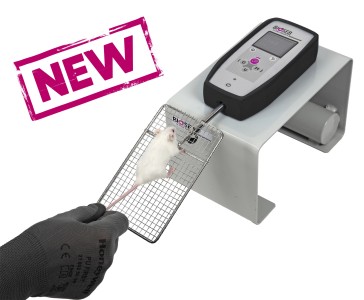Authors
Patrice L. Capers, Hyacinth I. Hyacinth, Shayla Cue, Prasanthi Chappa et al.
Lab
Departments of Microbiology, Biochemistry and Immunology/Medicine, Morehouse School of Medicine, Atlanta, USA
Journal
J Nutr Sci.
Abstract
Key pathophysiology of sickle cell anaemia includes compensatory erythropoiesis, vascular injury and chronic inflammation, which divert amino acids from tissue deposition for growth/weight gain and muscle formation. We hypothesised that sickle mice maintained on an isoenergetic diet with a high percentage of energy derived from protein (35 %), as opposed to a standard diet with 20 % of energy derived from protein, would improve body composition, bone mass and grip strength. Male Berkeley transgenic sickle mice (S; n 8–12) were fed either 20 % (S20) or 35 % (S35) diets for 3 months. Grip strength (BIOSEB meter) and body composition (dual-energy X-ray absorptiometry scan) were measured. After 3 months, control mice had the highest bone mineral density (BMD) and bone mineral content (BMC) (P < 0·005). S35 mice had the largest increase in grip strength. A two-way ANOVA of change in grip strength (P = 0·043) attributed this difference to genotype (P = 0·025) and a trend in type of diet (P = 0·067). l-Arginine (l-Arg) supplementation of the 20 % diet was explored, as a possible mechanism for improvement obtained with the 35 % diet. Townes transgenic sickle mice (TS; n 6–9) received 0·8, 1·6, 3·2 or 6·4 % l-Arg based on the same protocol and outcome measures used for the S mice. TS mice fed 1·6 % l-Arg for 3 months (TS1.6) had the highest weight gain, BMD, BMC and lean body mass compared with other groups. TS3.2 mice showed significantly more improvement in grip strength than TS0·8 and TS1.6 mice (P < 0·05). In conclusion, the high-protein diet improved body composition and grip strength. Outcomes observed with TS1.6 and TS3.2 mice, respectively, confirm the hypothesis and reveal l-Arg as part of the mechanism.
BIOSEB Instruments Used
Grip strength test (BIO-GS3)
Source :

 Douleur - Allodynie/Hyperalgésie Thermique
Douleur - Allodynie/Hyperalgésie Thermique Douleur - Spontanée - Déficit de Posture
Douleur - Spontanée - Déficit de Posture Douleur - Allodynie/Hyperalgésie Mécanique
Douleur - Allodynie/Hyperalgésie Mécanique Apprentissage/Mémoire - Attention - Addiction
Apprentissage/Mémoire - Attention - Addiction Physiologie & Recherche Respiratoire
Physiologie & Recherche Respiratoire




































 Douleur
Douleur Système Nerveux Central (SNC)
Système Nerveux Central (SNC)  Neurodégénérescence
Neurodégénérescence Système sensoriel
Système sensoriel Système moteur
Système moteur Troubles de l'humeur
Troubles de l'humeur Autres pathologies
Autres pathologies Système musculaire
Système musculaire Articulations
Articulations Métabolisme
Métabolisme Thématiques transversales
Thématiques transversales Congrès & Meetings
Congrès & Meetings 